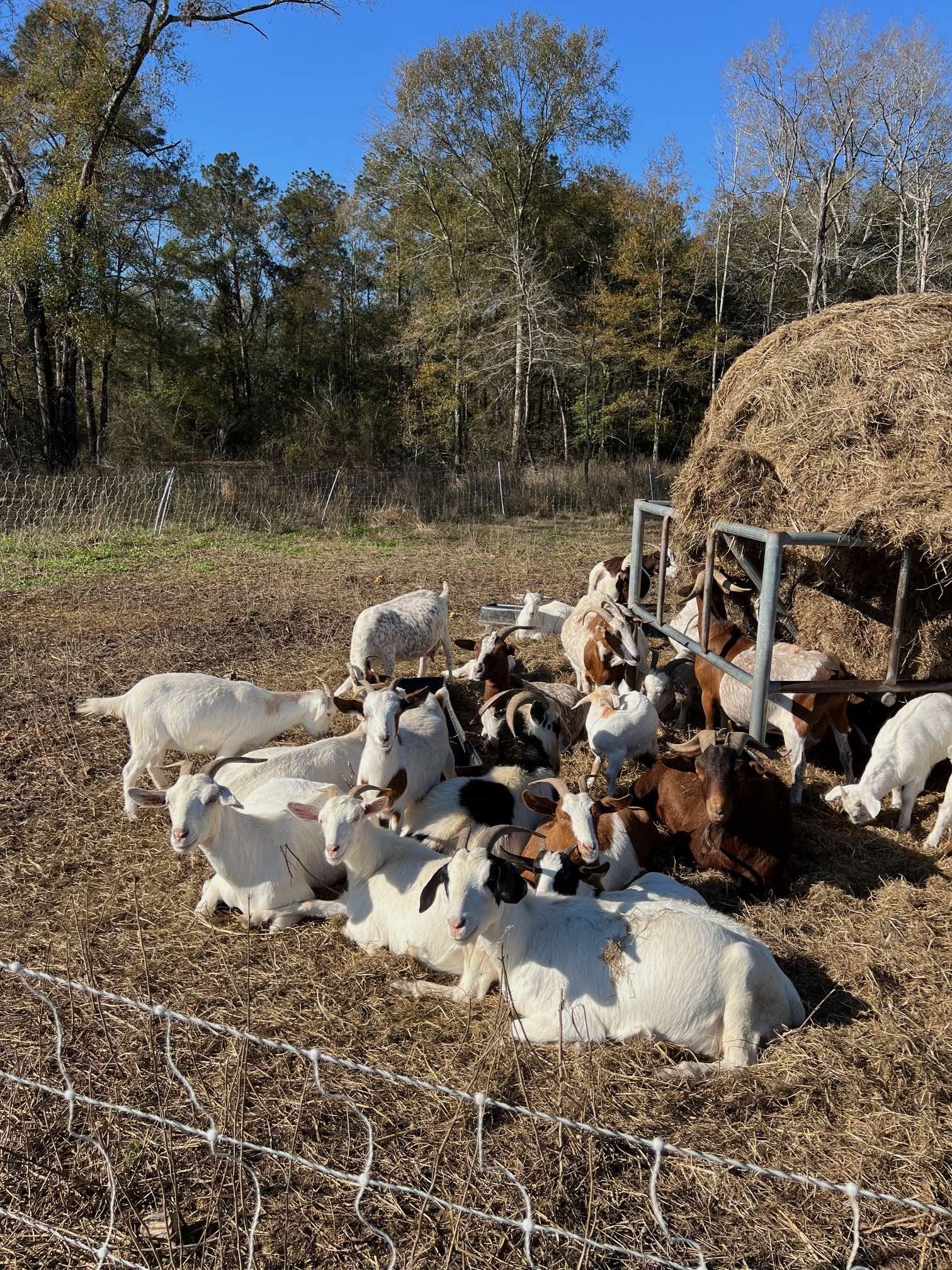Avian Flu & Egg Demand, Cozy Goats, Grazing Cattle and Foraging Pigs
While knock on wood, we have not directly been affecting by Avian flu in our flocks, the recent spread to dairy cows and even humans has caused another wave of alarm, decreased egg supply in grocery stores, concerns about egg safety and more.
I have been having conversations in person with many customers about Avian flu recently, so I thought I would share our perspective on it and what I know.
Avian flu has been around since as early as the late 1800s, possibly before. Similarly to human influenza, Avian flu mutates into to different strains each year. Naturally, some years are more contagious or more virulent than others. Generally the virus does not live on surfaces in high temperatures, so it thrives in the cool months and the strains often die off in warm months, only for a new strain to morph and spread the following year.
One of the (many) alarming things about the current strain, a mutation of the H5N1 strain also known as Highly Pathogenic Avian Influenza, is that it has been circulating globally since 2021 and in the United States since 2022. As far as I understand it, this is unusual.
From the number I could find, thus far, more than 125 million birds have been killed or euthanized in the U.S. as a result. There are conspiracy theories floating around about the aspect that if a farm of any size contacts the USDA, they are instructed to euthanize their birds.
The reality is that the mortality rate in chickens is more than 90%. It’s very unlikely that the birds will survive anyway and euthanizing them is often the more decent thing to do before they suffer and lowers the risk of infecting other animals, wildlife or people.
Further, very few farms with laying hens are breeding their own stock. So any natural resistance isn’t passed on to future generations anyway. We think about disease a little differently in our goats and pigs since we breed them.
For example, if we have something that affects one sow but not others, we naturally want to keep some of her piglets as breeding stock to possibly pass on naturally resistant genes. Or if certain goats are more susceptible to parasites or pneumonia, we don’t want to keep them or their kids, but definitely want to keep the offspring of unaffected goats who did well in the same conditions.
With chickens, because there is little demand for roosters from egg laying breeds and lots of red tape around processing poultry at a small scale, it is often cost prohibitive to raise breeding stock of egg layers and have an outlet for the roosters.
Avian flu is easily spread by wildlife, especially migratory birds like ducks and geese. In 2022, the advice from the USDA was to bring all pasture flocks indoors for their protection. Of course that’s in no way practical or even possible for most farms like ours.
And even though our birds theoretically could be at greater risk by living outdoors, where a duck could fly over and drop manure in their pasture at any point, there have been just as many, if not more outbreaks in large indoor chicken barns. In those settings, bio security measures are so intense that even prior to this Avian flu outbreak, staff were and are still required to shower in and shower out of the facilities.
This tells me that fresh air, sunshine and having lower stress by not being crammed inside with thousands of other birds under fluorescent lights does have a positive influence on chickens’ immune systems. But does it mean we are immune to an Avian flu outbreak? It absolutely does not.
So that’s what I know, our personal experience and what I wanted to share.
Notably, our egg production is down again. It went back up a bit the week after Christmas, only to plummet last Monday. Usually hens are more light sensitive than cold sensitive, but they could be a little shocked by the cold and wet weather.
This is generally the time of year the hens produce the least amount of eggs because of the short days. We as consumers and eaters are sometimes removed from the idea that eggs, too, are a seasonal food because typically hens in commercial hen houses are kept under 14 hours of artificial light year round and kept for just one laying cycle.
So for now what Avian flu means for us is that demand for fresh pastured eggs from small farms is maybe higher than ever and supply is just naturally low.
We do our best to plan for this time of year, but there are certain aspects we simply cannot control and appreciate your patience with being short or out of eggs. It’s definitely ideal to check the online inventory on our website or call first before you come for eggs. Trust me when I say we are more frustrated than anyone else when we don’t have enough eggs to meet demand. The feed bill doesn’t go down when the hens are laying less, for one thing!
Besides low egg production, things on the rest of the farm are marching forward, even if it’s soggy and dreary.
The fires in Los Angeles certainly remind me how lucky we are to have this kind of moisture, though. And as stressful as hurricane season and winter severe storm season can be, I would take it any day over wildfire risk.
The goats are annoyed about the rain and wet ground and they certainly love their cozy hoophouse.
Nutmeg’s triplet is chugging her bottles every day and her aunt, Cinnamon’s doe kid, is still drinking as slowly as ever. I’m getting used to it and being patient to try to ensure she eats as much as possible. She is fully half the size of her twin bother and they were the same size at birth!
Our farm staffer, Cade, has the finisher set of pigs on quite a circuit lately with hay bales and coffee grounds in every grid they move to weekly.
Yesterday I enjoyed watching them dig up some smilax roots. They have always loved eating these and I looked them up to remind myself — turns out they’re the key ingredient in sarsaparilla, used for root beer! Plus they have some medicinal properties. So whether the pigs are enjoying them just because of the sweet taste or to dose themselves with something medicinal, it’s always fun to see animals express their true nature in a natural environment.
On the other side of the farm, the breeder set is still hard at work rooting up a bunch invasive cogon grass and since they’re the closest to the house, they’re the recipients of all the kitchen scraps like persimmon trimmings, cauliflower leaves and lots more.
The cattle are still bale grazing, which despite the wet is still much more pleasant to set out new bales of hay and provide supplemental feed than when we had them in a sacrifice paddock in previous winters.
A sacrifice paddock means you choose one area for them to puck up with their feet and destroy versus continually moving them and risking them causing damage to many other areas. But with our small herd size and large areas we rotate them through, it’s working out fine this winter.
Grant’s also been trimming side branches on our hedge rows along the ditches to allow more sunlight in and have more grass growth. We’re trying to treat every speck of ground as grazable acreage, including the sides of the internal roads!
My parents are still here for a few more days and we’re very grateful for our cozy house with central heat because it’s been one of the coldest stretches they’ve visited for. Often we have lots of sunny 60+ degree days when they’re here in January and February, but I suppose it’s still better than Wisconsin winters.



























